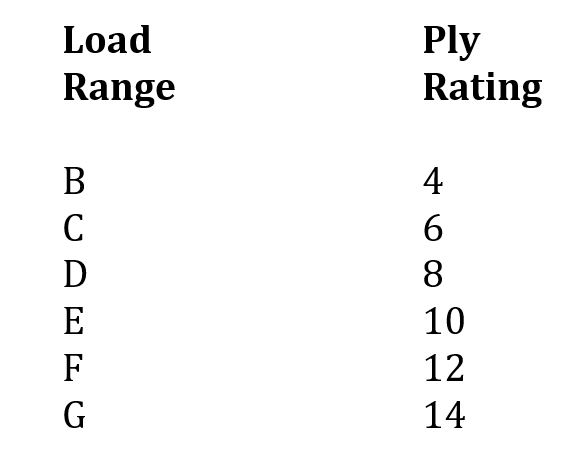Can You Put Car Tires on a Trailer
Don't undersell the importance of the trailer tires you choose. It all rides on those tires—quite literally.
A blowout not only causes a handling hazard, it can damage a trailer as the shredded tire carcass whips against bodywork.
Never use passenger tires on a trailer. They are usually rated Load Range B, a 4-ply equivalent, because their sidewalls are flexible for a smooth ride—far too flexible for trailer duty. They are not engineered to stabilize heavy loads or to handle the temperatures that build with them.
ST, or Special Trailer, tires are intended only for trailers. ST tires must never go on drive or steer wheels. Their stiffer sidewalls are engineered to handle the tall loads of a travel trailer or fifth wheel on straights and in turns but not the stresses generated by steering and acceleration. They are at least Load Range C, which means the sidewall is rated 6 plies.
Lately some trailer owners—and even manufacturers—are equipping trailers with LT, or Light Truck, tires.
How Good Are Standard Tires?
American RV manufacturers, except some making compacts and popups with wheels smaller than 13 inches, equip each new trailer with radials. You can run bias ply tires on your camper and radials on your tow vehicle, but you cannot mix bias and radial tires on the trailer itself. Bias plies are cheaper but have a shorter life and get lower fuel mileage.
Don't expect top-of-the-line tires on any but upscale models of travel trailers and fifth wheels. Some builders offer better tires as an option. Economy trailers and the increasingly popular light travel trailers usually have basic ST tires. They will have load capacities suitable for the loaded trailer, but they probably are rated 65 mph. Better ST tires are speed rated M, to 81 mph.
You can replace the standard tires with STs that have a greater load range, such as D or E. That would at least improve your trailer tires' resistance to heat, a major cause of tire failure from the inside out.
Most trailer tires, especially the more affordable, are made in China. Shop carefully. If you've heard the expression "China bombs," it's a reference to cheap Chinese trailer tires that tend to blow out. For a while, Chinese-made LT tires and high-performance passenger tires had the same problem. Although some Chinese tires are poorly constructed, others are better built—and cost more. Many U.S. brands also are made in China.
Read the tire reviews, not just the publicity write-ups. Owners who've experienced product failure typically don't shy from writing about it.
Are LT Tires Safe for Trailer Use?
LT tires are intended for vehicles that generate stress with heavy loads—pickups, commercial vans, and heavier SUVs. Their stability makes them ideal for mounting on a tow vehicle. Over the last couple of years, some camper trailer makers, including high-end manufacturer Airstream, have offered LT tires as an option. Some trailer builders have even made LTs standard.
ST tires and LTs differ. The truck tires have a higher top speed, typically to 100 (speed rating Q) or 106 (R). You may or may not want to haul a trailer at 75 mph, but the higher top-speed rating usually means a tire better resists heat buildup. Remember, heat is a tire's enemy.
Another difference is maximum inflation pressure. An LT tire likely has a lower maximum pressure than a similarly sized ST. Any tire pressure sticker on your trailer wouldn't apply to LTs. If you go with LTs, inflate to the maximum pressure embossed on the sidewall. Avoid over or under inflating, and don't overload your trailer.
Buying a higher load range stiffens a sidewall, so an LT tire with Load Range D, E or F is advisable on heavier trailers.
The farther into the alphabet the letter designation goes, the stronger the sidewall. Most passenger tires are Load Range B, but trailer and truck tires go higher.
Most tires have two-ply polyester cord sidewalls, and some are three-ply. Not all plies are the same. Plies are sheets of rubber encasing fabric threads that are twisted into strong strands, or cords. Depending on weight and thickness, those plies may be intended for lighter duty, as on a car, or for handling heavier loads, as on a truck.
Decades ago, the number of plies would increase on truck tires, sometimes to 10 or even 12. The letters used for load range today are intended to represent stiffness equal to multiple plies, not the actual number of plies:

If You Switch to LT
Make sure an LT's load capacity—for example, the number 125 in the tire size 275/70R18, 125R, E—is equal to or greater than what the trailer manufacturer specifies. LT tires typically have a significantly higher load capacity than passenger tires but a lower load capacity than ST tires. The 125 indicates a load capacity of 3,640 pounds per tire. Consult a load capacity chart. Also check to see that the trailer wheels can handle the maximum pressure.
Don't forget to add an LT spare. You shouldn't mix LTs and STs on the same trailer. Also check your warranty and insurance policies to make sure the change would not negate coverage. As always, check tires before every trip and keep them properly inflated.
Can You Put Car Tires on a Trailer
Source: https://www.crossingcreeksrvresort.com/index.php/categories/item/167-trailer-tires-st-or-lt#:~:text=Never%20use%20passenger%20tires%20on,temperatures%20that%20build%20with%20them.